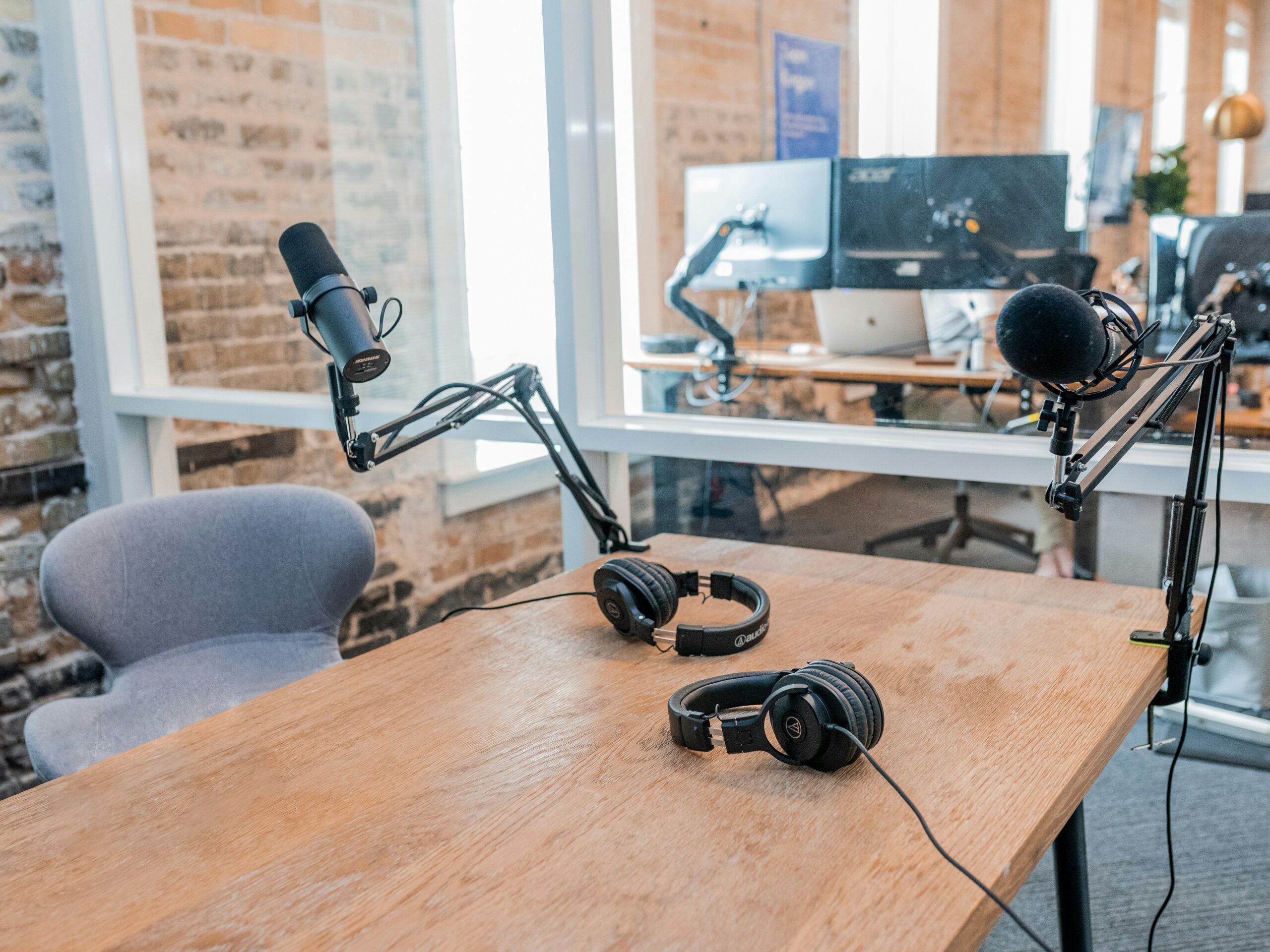 Back in 2019, Heather Drago just wanted to say, “No.”
Back in 2019, Heather Drago just wanted to say, “No.”
No to unreasonable demands. No to time-consuming social engagements. No to far-flung plans.
Maybe this hits close to home?
Drago embarked on her “Year of ‘No,’” during which she executed on her intent and evangelized about the power of setting boundaries. She felt so strongly about this revelation that she took a friend up on a challenge: Why not start a podcast about it?
That time, she did not say no.
“That’s a Hard No” focuses on mental health and wellness by underscoring boundaries. It’s only when we set appropriate boundaries with the people around us that we can discover a deeper sense of self.
But like the work of setting those boundaries, the work of developing and producing and distributing a podcast came with its own steep learning curve.
Drago began with simple tools like Squadcast for recording and Adobe Audition for editing, along with makeshift soundproofing solutions. “I literally took those science fair tri-fold foam core boards and put soundproofing panels on them,” she says with a laugh, describing her DIY approach.
Her setup has grown more sophisticated as she’s learned. Coming up on its fourth anniversary, the podcast is now part of the Evergreen Podcasts Network, based in Cleveland, and Drago is thrilled about the prospects of the podcasting world. It’s partly content marketing for the agency she owns, yes, but her podcast also represents a source of community and a place to connect with people who are navigating the same questions she is.
The Value of Consistency and Community
Consistency is key in podcasting, Drago says. “People love having a regular schedule. I know my favorite podcast, Saturday morning, I’m like, ‘Okay, it’s up!’ I’m ready to listen.”
Regularly scheduled episodes help build and maintain an audience, and taking breaks can significantly impact listenership. Drago highlights the need for planning and having episodes banked ahead of time to avoid disruptions.
Creating engaging and authentic content that resonates with listeners contributes to a sense of community and connection. “We’re talking about things we screwed up, anxieties, depression, fears, and foibles,” she says. These personal stories foster a deeper connection with the audience.
Integrating Podcasting into a Marketing Strategy
“That’s a Hard No” is not a B2B podcast, but the fundamental tenets are the same. A meaningful, strategic podcast can be a valuable addition to a B2B marketing strategy. By focusing on authentic storytelling and providing helpful content, businesses can establish authority and build trust with their audience.
“The podcast is really an extension of who we are,” Drago says, highlighting the importance of aligning podcast topics with brand values and expertise. As she points out, she’s not an expert in saying no; she’s an expert in struggling to say no. That’s the whole idea of the podcast!
She also mentions the potential pitfalls of trying to be everywhere at once and suggests prioritizing platforms where the audience is most active.
“I made a conscious decision to not blog because my podcast is my content,” she says, emphasizing the need to focus efforts where they are most effective.
Practical Advice for Small Business Marketing Teams
Leverage Your Team’s Strengths
Identifying and utilizing the unique skills within your team can make podcast production more efficient and effective.
“There’s a million blogs out there and we’re competing with all this AI crap,” Drago says. Find your niche in the noise. Assign roles based on each team member’s strengths. For instance, someone with strong organizational skills can manage scheduling and production coordination, while a team member with technical expertise can handle audio editing.
Focus on Quality Content
Creating engaging, high-quality content is essential to building and maintaining an audience. Drago advises that authenticity and helpfulness should be at the forefront of your content strategy.
“If it’s authentic and true and you’re being helpful, that’s the key,” she says. For small businesses, this means sharing insights, tips, and stories that resonate with your target audience. Consider what problems your customers face and how your expertise can provide solutions.
Stay Consistent
Consistency in podcasting is crucial for audience retention and growth. Regularly scheduled episodes help build a loyal listener base.
Plan your content calendar in advance and have episodes banked to avoid disruptions. Even when faced with unforeseen challenges, maintaining a consistent release schedule ensures your audience knows when to expect new content.
Experiment and Adapt
Podcasting is a relatively new medium, offering ample opportunities for creativity and innovation. Drago encourages small businesses not to be constrained by traditional formats.
“Don’t worry about what other people’s formats are,” she advises.
Experiment with different podcast styles, such as interviews, solo commentary, or mini-series on specific topics. Listen to a variety of podcasts to understand what works and what doesn’t. Drago’s DIY approach involved trial and error, which ultimately led to creating a nice interview format that worked for her needs.
Build a Support System
Managing a podcast can be demanding, especially for small teams. Drago highlights the importance of building a support system to share the workload and prevent burnout.
“After the first year, I was exhausted because editing podcasts is really hard,” she admits.
Consider working with a podcast network or hiring freelancers for tasks like sound engineering and editing. This allows you to focus on content creation and audience engagement. Drago’s collaboration with Evergreen Podcasts provided her with professional support and guidance, making the production process more manageable.
Engage with Your Audience
Creating a podcast is about sharing your message while building a community. This is a long-term play. Engage with your listeners through social media, email newsletters, and interactive segments within your podcast.
Drago’s approach includes inviting listeners to write in questions and featuring them in episodes. This engagement helps foster a loyal and interactive audience, making them feel valued and heard.
Use Multi-Channel Promotion
 Promoting your podcast across multiple channels ensures it reaches a broader audience. Drago uses various platforms to share her podcast, including YouTube and social media.
Promoting your podcast across multiple channels ensures it reaches a broader audience. Drago uses various platforms to share her podcast, including YouTube and social media.
“We have a small audience of about 1,700 a month, but they are loyal and active listeners,” she says. Leverage your existing marketing channels, such as your website, email list, and social media profiles, to promote new episodes. Cross-promotion with guests and collaborators can also help expand your reach.
Measure and Adjust
Tracking the performance of your podcast is essential to understand what resonates with your audience and what needs improvement. Use analytics tools to monitor metrics like download numbers, listener demographics, and engagement levels. It’s important to be flexible and willing to adjust your strategy based on these insights.
“Set your expectations of what success looks like and be prepared to adapt as you learn from your audience’s feedback,” she says.
Prioritize Authenticity and Value
Finally, Drago emphasizes the importance of prioritizing authenticity and providing real value to your listeners. “The important thing is being helpful,” she says.
Small businesses should focus on delivering content that genuinely addresses the needs and interests of their audience. This builds trust and positions your brand as a reliable and authoritative voice in your industry.
By following these practical tips, small business marketing teams can effectively incorporate podcasting into their content marketing strategy, creating meaningful connections with their audience and driving long-term engagement.


I don’t think the title of your article matches the content lol. Just kidding, mainly because I had some doubts after reading the article.
Thanks for sharing. I read many of your blog posts, cool, your blog is very good.